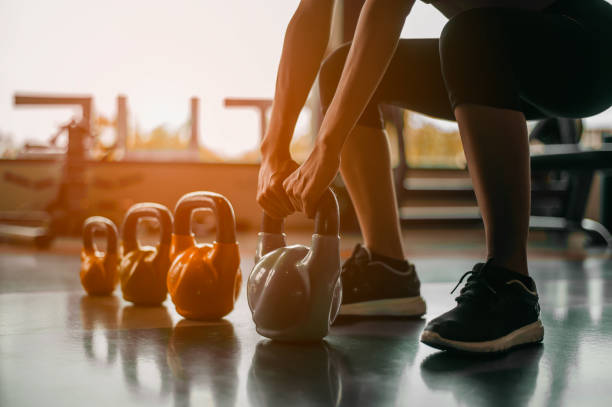What are your fitness goals? Some people (okay, a lot of people) want to lose weight. Others want to develop a more impressive body with bulging muscles. There are those who work out to get better at particular sports, or to recuperate after an injury.
And then there’s functional training. More and more gyms are offering functional training classes, such as Anytime Fitness. It’s becoming more popular because the benefits are obvious and practical.
So, What IS Functional Training?
Basically, it’s a type of strength training. But it’s not about just helping you get bigger muscles to make you look more impressive. It’s more about improving your physique, so you’re better able to perform your usual daily activities.
That means emphasizing exercises that you’d normally do often in real life. Doing a bench press, for example, is not an exercise used for functional training. After all, just how often would you have to lift a heavy beam?
In contrast, squats are very common with functional training. Think about it. Just how often do you need to squat in your daily activities? You squat every time you sit down and stand up, when you get into your car, and when you use the bathroom. It’s so common that it’s perhaps the best example of a functional training exercises.
Benefits of Functional Training
These are the specific benefits of functional training that make you readier for your daily activities:
Greater Strength
You boost your overall strength when you engage regularly in functional training. Most functional movements boost your core and stability, and the more you get a stable foundation, the greater your overall strength becomes.
With many exercise machines, you’re focusing on specific muscle groups. While that’s a great way to build bigger muscles. But you will want to focus more on all your stability muscles if you want more useful overall strength.
Keep in mind that in most daily activities, you don’t just use isolated muscle groups. Instead, you have many different muscle groups working together.
Let’s say you’re shoveling dirt in your flower bed. This means you’re moving the shovel by using your biceps, along with your upper and lower body. You’re using your shoulders and abs to lift the shovel and throw the dirt. You’re using muscles in your lower back to bend over. When you push the shovel into the dirt, you’re using your quads.
Enhanced Balance
Lots of things in life can literally throw you off-balance. That can lead to accidents, and generally inefficiency in how you perform your daily chores. But with better balance and stability, you can deal with such things more effectively, and get more things done better, and in less time.
A lunge with a shoulder press is one of the more effective exercises for boosting stability. It prepares you for many activities, like reaching for stuff on a shelf.
Reduced Risk of Injury
As you get more into functional training, you become less likely to get injured as you perform your daily activities. Ask any physical therapists about how many of their patients get hurt just by doing ordinary, everyday activities. Plenty of people end up throwing out their back when they lift heavy bags, potted plants, or even just their kids or grandkids.
Lots of small muscles get injured unexpectedly, with the most surprisingly ordinary events. But functional training prepares you for lifting heavy stuff from the floor, without hurting yourself.
No Absolute Need for a Gym
While a gym can have plenty of good equipment for functional training, you can do many of the needed exercises at home. This is because functional training doesn’t really involve a lot of high-intensity exercises. You can always do some pushups, squats, simple lunges, pull-ups on door jams, and bicep curls using soup cans.
Typical Functional Training Exercises
Here are some exercises that you should incorporate into your functional training workout:
- Lateral shuffle bar pickup
- Sumo high pull
- Suitcase deadlift
- Lunge to shoulder press
- Squat to shoulder press
As you may have noticed, plenty of these exercises involve picking heavy stuff from the floor. With functional training, you’ll be able to lift heavier weights in real life without injuring yourself. Other exercises involve squats and lunges, because these are also common everyday actions.
